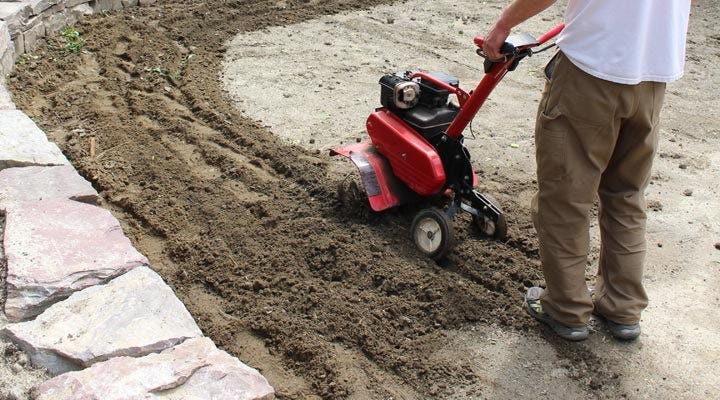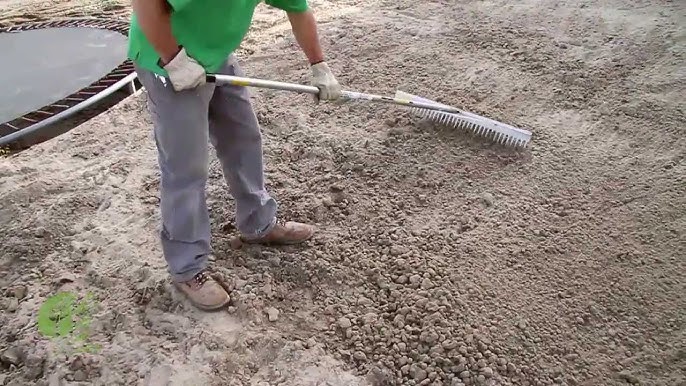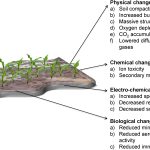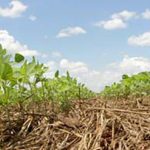Imagine sowing seeds in your garden, eagerly waiting for them to sprout, only to find out that nothing grows. Frustrating, right?
The secret to a flourishing garden lies beneath the surface—quite literally. Preparing your soil before planting is the foundation for healthy and vibrant plants. But how do you ensure your soil is ready to support this growth? You might wonder why some gardens seem to thrive while others struggle.
The answer often lies in the preparation phase, a crucial step that many overlook. Soil preparation can be the game-changer, turning your gardening efforts from futile to fruitful. We’ll guide you through the essential steps to prepare your soil effectively, ensuring your seeds have the best start possible. Ready to dig in? Let’s get started!

Choosing The Right Soil
Choosing the right soil is crucial for a successful garden. The soil forms the foundation for healthy plant growth. It provides nutrients, water, and support. Selecting the appropriate soil type ensures your seeds thrive. Understanding soil composition will help you make the best choice.
Understanding Soil Types
Soil comes in various types, each with unique characteristics. Sandy soil drains quickly and warms up fast. Clay soil retains water but can become compacted. Loamy soil is a balanced mixture of sand, silt, and clay. It offers excellent drainage and nutrient retention. Knowing your soil type is the first step.
Testing Soil Ph
Plants need specific pH levels to absorb nutrients. Most plants prefer slightly acidic to neutral pH levels. Testing soil pH helps you adjust conditions for optimal growth. Use a pH meter or test kit for accurate results. Amend the soil with lime or sulfur if needed.
Improving Soil Fertility
Rich, fertile soil promotes healthy plant development. Organic matter like compost or manure enhances soil fertility. It adds nutrients and improves soil structure. Work organic material into the topsoil before planting. This prepares a nutrient-rich environment for seeds.
Good drainage prevents waterlogged roots and fungal diseases. Sandy soil naturally drains well. Clay soil may need amendments to improve drainage. Add organic material or sand to heavy clay soil. Raised beds can also enhance drainage in problem areas.
Removing Weeds And Debris
Weeds compete for nutrients, water, and sunlight. Clear the soil of weeds and debris before sowing seeds. Hand-pull or use a hoe for effective removal. Ensure the area is clean and ready for planting.

Testing Soil Health
Testing soil health is crucial for a fruitful garden. Healthy soil boosts seed growth. It provides essential nutrients. Before planting, understanding soil health ensures successful crops. This process involves checking soil properties. Let’s explore ways to test soil health effectively.
Understanding Soil Composition
Soil composition affects plant growth. It includes sand, silt, and clay. Balance between these components is vital. Too much sand drains water quickly. Clay retains water, but can suffocate plants. Silt provides nutrients. Knowing the balance helps tailor soil amendments.
Testing Soil Ph
Soil pH impacts nutrient absorption. Most plants thrive in neutral pH. Test kits are available in stores. They help measure acidity or alkalinity. Adjusting pH improves plant health. Lime increases pH for acidic soil. Sulfur lowers pH for alkaline soil. Regular testing ensures balanced soil.
Checking Soil Nutrients
Nutrients are essential for plant growth. Key elements include nitrogen, phosphorus, and potassium. Testing kits reveal nutrient levels. Deficiencies can be corrected with fertilizers. Organic matter boosts nutrient content. Compost enriches soil naturally. Regular checks maintain nutrient balance.
Assessing Soil Drainage
Good drainage prevents waterlogging. Waterlogged soil harms plant roots. Simple tests check drainage. Dig a hole and fill it with water. Measure how fast water drains. Slow drainage indicates compacted soil. Amend with organic matter or sand. Proper drainage supports healthy roots.
Evaluating Soil Texture
Texture affects water retention and drainage. Feel soil between your fingers. Sandy soil feels gritty. Clay is sticky when wet. Loamy soil is ideal. It retains moisture and drains well. Texture influences irrigation needs. Understanding texture aids in soil management.
Amending Soil Nutrients
Amending soil nutrients is vital for a successful garden. A nutrient-rich soil supports healthy plant growth and abundant harvests. Understanding how to amend soil ensures that seeds develop into strong plants. This process involves adding organic and inorganic materials to the soil. These materials improve soil structure, enhance nutrient content, and promote beneficial organisms. Let’s explore some crucial steps in amending soil nutrients.
Understanding Soil Composition
Identify the type of soil you have. Common types include clay, sandy, and loamy. Each type has unique characteristics and nutrient needs. Conduct a soil test to determine nutrient deficiencies. Test kits are available at garden centers or online. Knowing your soil’s composition helps in selecting the right amendments.
Choosing The Right Amendments
Organic matter is key to improving soil health. Compost, manure, and leaf mold are excellent choices. They enrich the soil with essential nutrients and improve drainage. For sandy soils, add organic matter to increase water retention. Clay soils benefit from added sand or gypsum to improve aeration.
Applying Organic Fertilizers
Organic fertilizers provide essential nutrients slowly over time. They include bone meal, blood meal, and fish emulsion. These fertilizers are gentle on the environment. Apply them according to package instructions for best results. They enhance soil fertility and promote healthy plant growth.
Incorporating Inorganic Fertilizers
Inorganic fertilizers offer a quick nutrient boost. They come in granules or liquid form. Choose a balanced formula with equal parts nitrogen, phosphorus, and potassium. Use these fertilizers sparingly to avoid nutrient burn. Follow the recommended application rates for safe use.
Maintaining Soil Ph Balance
Soil pH affects nutrient availability to plants. Most garden plants prefer a pH between 6.0 and 7.0. Test your soil’s pH and adjust as necessary. Lime raises pH in acidic soils, while sulfur lowers it in alkaline soils. Maintaining proper pH ensures optimal nutrient uptake by plants.
Ensuring Proper Drainage
Preparing soil for seed sowing requires good drainage. Mix soil with sand and compost to prevent waterlogging. Ensure the soil is loose and aerated for healthy root growth.
Preparing your garden soil properly before sowing seeds is crucial, and one of the key aspects to focus on is ensuring proper drainage. Good drainage prevents water from pooling around your plants, which can lead to root rot and other plant diseases. By taking a few simple steps, you can optimize your soil’s drainage, giving your seeds a strong start.Understanding Soil Texture
Start by examining your soil’s texture. Is it sandy, loamy, or clay-heavy? Sandy soil drains too quickly, while clay can hold too much water. Loam is ideal, offering the right balance for drainage and nutrient retention. To test your soil, grab a handful and squeeze it. If it falls apart easily, it’s sandy. If it clumps tightly, it’s clay. Aim for a crumbly texture, which indicates good loam.Amending The Soil
Improving drainage might require adding organic matter. Compost is a fantastic choice—it enriches the soil and enhances its structure. Mix compost thoroughly into the top 12 inches of soil. This not only improves drainage but also boosts nutrient content, giving your seeds a healthier environment to grow.Creating A Slope
If your garden area is flat, consider creating a slight slope to facilitate water runoff. A gentle incline directs excess water away from your plants. Use a rake to shape the soil, ensuring water won’t pool around seedlings. This simple adjustment can protect your seeds from drowning during heavy rains.Installing Drainage Solutions
For persistent drainage problems, you might need more than just soil amendments. Installing drainage solutions like French drains or raised beds can be effective. Raised beds allow you to control soil quality and drainage. French drains help redirect water away from problem areas, keeping your garden healthy.Mulching For Moisture Control
After sowing your seeds, apply a layer of mulch. Mulch helps regulate soil moisture and temperature, protecting seeds from extreme conditions. Choose organic mulch like straw or wood chips. It breaks down over time, further enriching your soil while maintaining optimal moisture levels.Monitoring And Adjusting
Once your seeds are in the ground, keep an eye on how water behaves in your garden. Are there areas where water pools or drains too quickly? Make adjustments as needed. Gardening is a dynamic process, and what works today might need tweaking tomorrow. Stay attentive to your garden’s needs. Ensuring proper drainage is about observation and adjustment. Each garden is unique, and your approach might differ based on your specific conditions. How will you adapt these tips to your garden’s needs?
Conclusion
Preparing soil well boosts your garden’s health. Proper soil preparation ensures seeds grow strong. Start with clearing debris. Then, loosen soil with a spade or tiller. Check the pH level. Add compost or organic matter for nutrients. Ensure good drainage to prevent waterlogging.
All these steps help plants thrive. Happy gardening begins with healthy soil. So, invest time in soil care. Your garden will thank you with a bountiful harvest. Remember, healthy soil is the key to vibrant plants. Enjoy nurturing your garden and watching it flourish!



